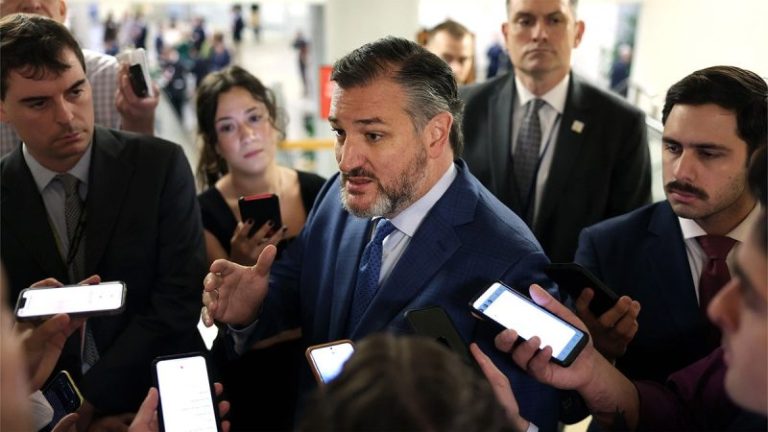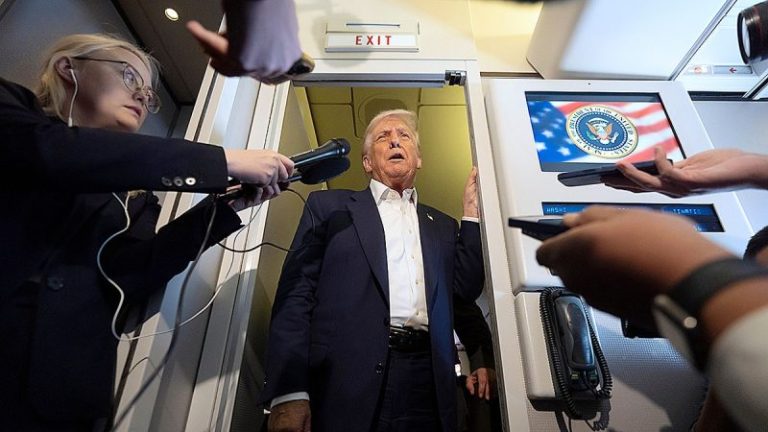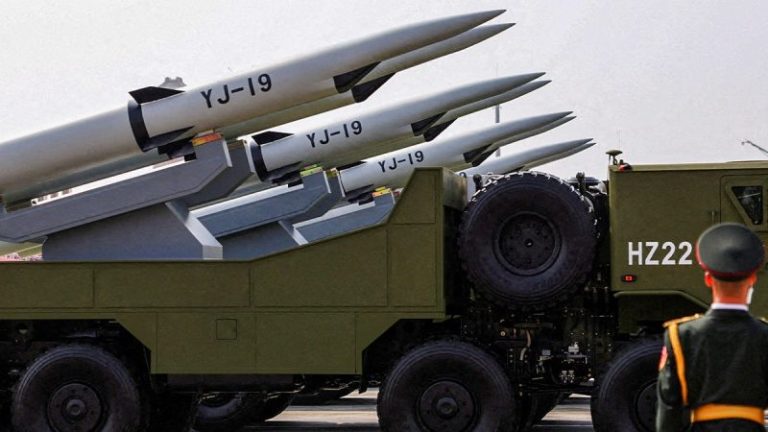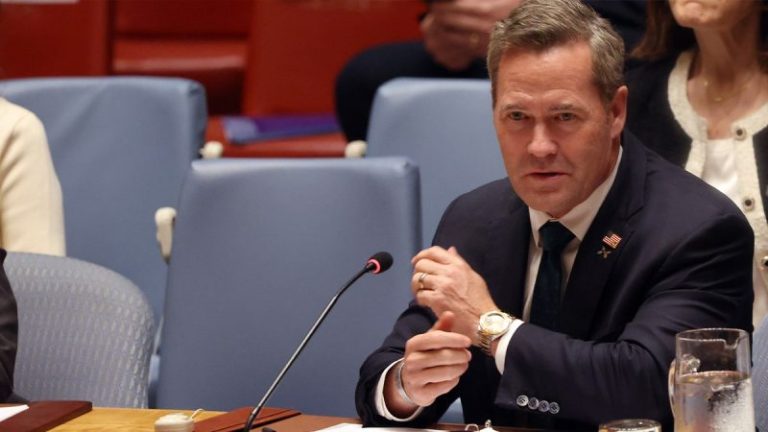The late financier and convicted sex offender Jeffrey Epstein discussed President Donald Trump in emails released by the House Oversight and Government Reform Committee Wednesday.
The Democrats on the committee released three emails Wednesday that Epstein’s estate provided them — prompting Republicans to release their own stash of 20,000 pages of Epstein documents hours later, while the White House accused Democrats of seeking to distract from the government shutdown.
In response, Trump announced Friday that he would direct the Justice Department and the FBI to investigate Epstein’s relationship with those including former President Bill Clinton, former Treasury Secretary during the Clinton administration Larry Summers and others.
‘This is another Russia, Russia, Russia Scam, with all arrows pointing to the Democrats,’ Trump said in a Friday Truth Social post.
Meanwhile, Clinton has denied that he ever visited Epstein’s island, and wrote in his 2024 memoir ‘Citizen’ that he wished they’d never met. Clinton has not been accused of engaging in any sexual misconduct in connection to Epstein or his victims.
A spokesperson for Summers did not immediately respond to a request for comment from Fox News Digital.
Included in the documents released Wednesday are emails between Epstein and his longtime associate Ghislaine Maxwell, and correspondence with author Michael Wolff, former President Barack Obama’s White House counsel Kathy Ruemmler, among others, where Epstein mentions Trump.
‘i want you to realize that that dog that hasn’t barked is trump.. (VICTIM) spent hours at my house with him ,, he has never once been mentioned. police chief. etc. im 75 % there,’ Epstein said in an email to Maxwell in April 2011, which was provided with other correspondence to the committee by Epstein’s estate in response to a subpoena request.
‘I have been thinking about that…’ Maxwell said in response.
The ‘VICTIM’ mentioned in the emails is redacted, but White House press secretary Karoline Leavitt said in a statement to Fox News that it was a reference to Virginia Giuffre, who accused Epstein of facilitating sexual encounters between her and some of his influential friends, including the U.K.’s then-Prince Andrew.
Giuffre died by suicide in April, but said in her memoir that was completed prior to her death and released in October that she met Trump once at Mar-a-Lago in Palm Beach, Florida, and that he ‘couldn’t have been friendlier.’ She did not accuse Trump of any misconduct.
The emails released by both parties on the Oversight Committee lack context and are full of redactions.
In another email from 2019, Epstein told Wolff that ‘of course he knew about the girls as he asked ghislaine to stop,’ referencing Trump. The president previously told reporters in July that he had prohibited Epstein from the president’s Florida Mar-a-Lago golf club because Epstein kept ‘taking people who worked for me.’
Additionally, it’s unclear from the exchange whether ‘girls’ referred to minors or not.
In a separate exchange between Wolff and Epstein from 2015, the two discussed the possibility of CNN asking Trump about his relationship with Epstein.
‘I think you should let him hang himself,’ Wolff said in an email to Epstein. ‘If he says he hasn’t been on the plane or to the house, then that gives you a valuable PR and political currency. You can hang him in a way that potentially generates a positive benefit for you, or, if it really looks like he could win, you could save him, generating a debt.’
Wolff is an author who has written four books about Trump’s political career — including ‘Fire and Fury: Inside the Trump White House,’ which was released in 2018 and pieced together an unflattering picture of Trump’s early days in office during his first term. The White House at the time characterized it as ‘trashy tabloid fiction.’
Hours after the initial Democrat release of documents, the Republicans on the committee unveiled their own document pile, which included emails from Epstein where he also discussed Trump.
Other email exchanges released Wednesday included correspondence between Epstein and Ruemmler, who is now the chief legal officer at Goldman Sachs Group Inc.
Ruemmler shared a link to a New York Times opinion piece in August 2018, which detailed alleged hush-money payments made to porn star Stormy Daniels to keep quiet about an alleged affair with Trump. Ruemmler said she thought Epstein would find the piece ‘interesting.’
‘I know how dirty donald is,’ Epstein emailed in response.
Trump was convicted in May 2024 on 34 felony counts of falsifying business records in connection with the alleged hush-money payments. He continues to deny the affair and maintains his innocence, calling the case a politically motivated ‘witch hunt.’
Ruemmler did not immediately respond to a request for comment from Fox News Digital.
In a separate 2017 email to Summers, Epstein said that while he’s met some ‘very bad people,’ none have been ‘as bad as trump.’
‘Not one decent cell in his body.. so yes – dangerous,’ Epstein said.
Summers did not immediately respond to a request for comment from Fox News Digital.
While the documents themselves are authentic, Epstein’s statements in the emails remain unverified and uncorroborated. They do not allege wrongdoing by Trump; they only show Epstein referencing him. Trump has not faced formal accusations of misconduct tied to Epstein, and no law enforcement records connect Trump to Epstein’s crimes.
The White House shrugged off the release as a ‘distraction.’
‘These emails prove literally nothing,’ White House spokesperson Abigail Jackson said in a Thursday statement to Fox News Digital. ‘Liberal outlets are desperately trying to use this Democrat distraction to talk about anything other than Democrats getting utterly defeated by President Trump in the shutdown fight.’
Meanwhile, Trump also said in a Wednesday social media post that the Democrats were seeking to revive discussion on the Epstein case to distract from their role in the government shutdown.
‘The Democrats are trying to bring up the Jeffrey Epstein Hoax again because they’ll do anything at all to deflect on how badly they’ve done on the Shutdown, and so many other subjects,’ Trump said Wednesday. ‘Only a very bad, or stupid, Republican would fall into that trap.’
‘There should be no deflections to Epstein or anything else, and any Republicans involved should be focused only on opening up our Country, and fixing the massive damage caused by the Democrats!’ Trump said.
Trump’s connections to Epstein have come under heightened scrutiny after Trump’s Justice Department and FBI announced it would not unseal investigation materials concerning Epstein, and that their investigation into the case had closed.
Additionally, the agencies said that they did not detect a list of sexual predators with ties to Epstein, and concluded there were no new people who could face charges.
Meanwhile, U.S. Deputy Attorney General Todd Blanche met with Epstein associate Maxwell in Florida in July, and the Justice Department released transcripts from their interview. In the records, Maxwell claimed that she didn’t see Trump behave in an inappropriate manner.
‘I never witnessed the President in any inappropriate setting in any way,’ Maxwell said, according to the transcript the Justice Department released. ‘The President was never inappropriate with anybody. In the times that I was with him, he was a gentleman in all respects.’
Epstein died by suicide while awaiting trial on federal charges in 2019. Maxwell has been convicted on charges including sex trafficking of a minor and is serving a 20-year sentence.
Fox News’ Patrick Ward and The Associated Press contributed to this report.










